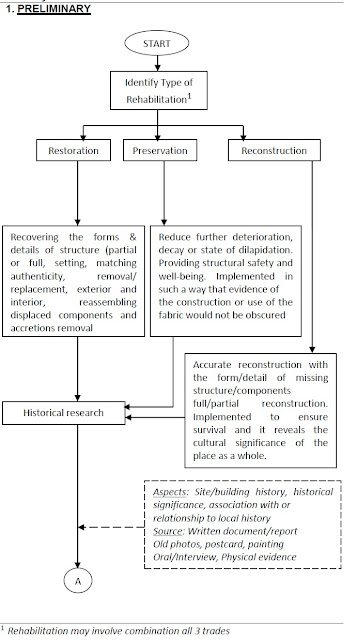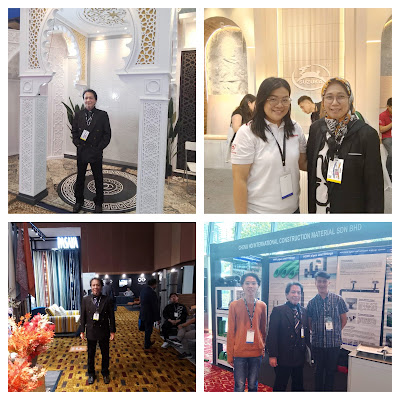I wrote the following article back in May 2023, during the peak surge in interest surrounding VR, MR, and AR technologies particularly within the realm of modern architecture:
AI and the Future of Architectural AR/VR/MR
Toward the end of 2023, I had a Zoom discussion with a CEO from a neighboring country, who echoed my concerns: the hardware, software, and headsets required for these technologies remain prohibitively expensive. Moreover, most banking and financial institutions were unwilling to finance such initiatives except in the gaming sector, where VR headsets continue to gain traction. Unfortunately, VR adoption in the Malaysian architectural scene remains limited.
Closing out 2024, I delivered a short lecture right in the heart of Bukit Bintang (at Berjaya Times Square), where I addressed eye impairment in the construction industry. During the talk, I highlighted the long-term visual effects of prolonged use of VR headsets and simulation technologies an issue that has largely gone unnoticed in mainstream discussions.
I've been waiting for years to see meaningful discussions or research on the disadvantages of using VR/AR/MR headsets especially in architecture and construction but so far, not a single speaker, manufacturer, or supplier has seriously addressed this issue.
With ARCHIDEX 2025 just around the corner, I genuinely hope this topic will finally be brought into the spotlight. As someone who has studied and spoken about the long-term impacts including visual fatigue, ergonomic risks, and accessibility limitations especially in the gaming industry. I believe it’s time we stop romanticizing immersive tech and start having a more balanced, research-driven dialogue.
I’ll be attending sessions at both KL Convention Centre and MITEC, and I plan to raise some pointed questions to the exhibitors and speakers. Let’s see if anyone is ready to talk about what’s being overlooked.
Virtual Reality (VR), Augmented Reality (AR), and Mixed Reality (MR) have been transformative in architecture, but they are not without challenges. Here's my take on problems and limitations associated with their use in the architecture, engineering, and construction (AEC) industry.
1. HIGH LEARNING CURVE
- Problem - Many architects and stakeholders are not trained in immersive tech.
- Effect - Requires time and resources to upskill teams, especially for older professionals.
Example - A seasoned architect might struggle with VR navigation or interpreting AR overlays.
2. COST OF EQUIPMENT AND DEVELOPMENT
- Problem - High initial costs for headsets, software licenses, and custom content,
- Effect - Small firms may be unable to afford investment in quality VR/AR/MR systems.
Example - Microsoft HoloLens or high-end VR setups like HTC Vive Pro can be prohibitively expensive.
3. HARDWARE LIMITATIONS
- Problem - Many devices still suffer from limited field of view, motion sickness, and poor resolution.
- Effect - Impairs user experience, especially in long design sessions or presentations.
Example - Long VR walkthroughs may cause nausea or eye fatigue, especially for clients.
4. COMPATIBILITY
- Problem - Inconsistent compatibility between AR/VR/MR platforms and BIM/CAD tools.
- Effect - Workflow disruption and data conversion issues.
Example - A Revit model might not easily export into Unity or Unreal Engine for immersive viewing.
5. NETWORK STABILITY
- Problem - Cloud-based AR/VR platforms require high bandwidth and low latency.
- Effect - Difficulties arise on-site or in remote areas with weak internet.
Example: An MR overlay of MEP systems on-site may lag or misalign due to poor signal.
6. FRAGMENTED ECOSYSTEM
- Problem - Many vendors, platforms, and standards lead to confusion and lack of industry standardization.
- Effect - Complicated selection process and poor long-term ROI.
Example: Choosing between Autodesk XR, Enscape VR, Twinmotion, or Unity-based tools can overwhelm teams.
7. LIMITED STAKEHOLDER ENGAGEMENT
- Problem - Not all clients or decision-makers are comfortable or impressed by immersive tech.
- Effect - Underutilized tools in client presentations or public engagement.
Example: A senior developer may prefer 2D plans and physical models over VR.
8. GREY AREAS - LEGAL AND REGULATORY
- Problem - up till now - there is a dire lack of legal frameworks around VR/AR-based design approvals.
- Effect: Approvals still rely on 2D plans and formal documentation.
Example: City councils may not accept MR walkthroughs as official submissions for planning approval.
9. ACCURACY
Problem - Real-world overlays often misalign due to calibration or sensor errors.
Effect - Risk of construction errors if used for site validation or inspection.
Example: An MR overlay of HVAC routing may not align perfectly with physical ducts, misleading contractors.
10. OVERRELIANCE ON VISUALIZATION
Problem - Pretty visuals can overshadow practical concerns like structural integrity, sustainability, or cost.
Effect - Decision-makers may approve unfeasible or inefficient designs.
Example: A beautifully rendered VR house may ignore sun orientation or passive cooling strategies.
MITIGATION STRATEGIES
Invest in training and incremental adoption.
- Use hybrid approaches, such as using VR for immersive design visualization and 2D drawings for regulatory approvals.
- Choose cross-compatible platforms (e.g., Unity Reflect, Autodesk Construction Cloud) to ensure smoother integration with existing BIM workflows.
- Run pilot projects to evaluate actual ROI before full-scale implementation.
- Encourage banking and financial institutions to create dedicated initiatives and funding mechanisms to support immersive technology adoption, especially for architecture, engineering, and construction sectors.































